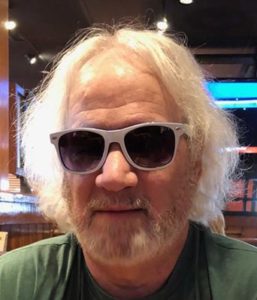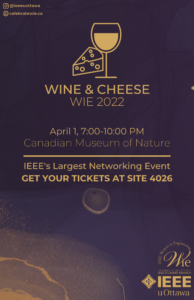Events
Please see attached .pdf
MARATHON-EMC_PL-CA_agenda_v4TITLE: VA Metering for Managing Efficiency of Energy Delivery in Polyphase Systems
SPEAKER: John Voisine, PE, Development Engineering Manager (Retired), Landis+Gyr Lafayette, IN, USA
ABSTRACT: There is a fundamental basis for the measurement of electrical energy delivered to a load. This energy is referred to as active energy, with SI unit of watt-hour (Wh). Similarly, the rate of change of active energy is called active power, with SI unit of watt (W). Algorithms used for calculating active energy and active power in revenue grade electricity meters yield consistent results. In contrast, understanding and defining the fundamental basis for apparent energy, with SI unit of volt-ampere hour (VAh) and apparent power, with SI unit of volt-ampere (VA) remains elusive. Consequently, various algorithms are used in electricity meters and these yield results that are often inconsistent and differ significantly due to such factors as harmonic content, polyphase connection system (wye, delta, etc.), and polyphase load imbalance. Active energy conforms to the law of conservation of energy whereas apparent energy does not. Rather than continue trying to understand and define the “right” or “true” meaning of apparent energy, a new concept of “Source VA” is proposed. Source VA gives consistent results on the physical sizing needs of the infrastructure used to deliver active energy. In understanding Source VA, it is helpful to think in terms of a progression of incentives used in managing the efficiency of energy delivery. The terms Source VA and Source Apparent Power are used interchangeably.
SPEAKER’s BIO: John Voisine graduated from Michigan Technology University, with B.S. in Electrical Engineering, High Honors, in 1975. He has been a registered Professional Engineer since 1981 and holds 45 patents. He has been employed by Landis+Gyr in their metering group in Lafayette Indiana for the past 36 years. He is retired but continues part time with Landis+Gyr on special assignments. He continues as a member of a global team approving designs of new metering products for Landis+Gyr worldwide. He was responsible for development of the first solid state electronic meter offered by Landis+Gyr in North America in 1986. As engineering manager, he was responsible for the development of Landis+Gyr’s offering of residential, commercial, and industrial, metering products in North America until his retirement in 2019. John is a member of the ANSI C12 Standards Committees for Electricity Metering and a member of the US UL2735 and Canadian UL2735C Standards Technical Panels for Meter Safety. He is a member of the IEEE committee revising the IEEE 1459 Standard on definitions of electric power quantities. He has been a guest lecturer at Purdue University giving talks on metering development projects over the years and has given training classes on revenue grade electricity metering theory and technologies at several U.S. electric utilities.
Admission: Free. Registration required at https://events.vtools.ieee.org/m/286026
For any additional information, please contact: branislav@ieee.org or ajit.pardasani@ieee.org.
Speaker : Prof. Akimasa HIRATA, Director, Nagoya Institute of Technology, Japan
Topic : Human safety from Electromagnetic Fields
Date : Wednesday, March 2, 2022
Time : 5:00 PM to 6:30 PM EST
Location : Online via Webex (This presentation will NOT be recorded)
Registration: Free (Preference given to IEEE EMC CPMT/ED/CAS/SSCS/APS/MTT society members.)
To register, please email Dr. Syed Bokhari.
Abstract:
There exists safety concern for exposure to electromagnetic fields. The adverse health effect due to electromagnetic field has been summarized in documents of World Health Organization. To protect the human from electromagnetic fields, a two-tier approach has then been applied in our daily life. First, the exposure standards are developed based on the threshold of adverse health effect. The limit of induced physical quantities in the human body, such as induced electric field and specific absorption rate (SAR), are derived considering the reduction (safety) factor. The safety of the products should be assessed following the method of product standards. In this lecture, the relationship between these two types of standards is discussed including the rationale from engineering viewpoint from extremely low frequencies to millimeter waves. Recent standardization related to 5G wireless communications system is also summarized. In addition, the research necessity in this research field is mentioned.
Biography:
Prof. Harita received the B.E., M.E., and Ph.D. degree in communications engineering from Osaka University, Suita, Japan, in 1996, 1998, and 2000, respectively. From 1999 to 2001, he was a Research Fellow of the Japan Society for the Promotion of Science, and also a Visiting Research Scientist at the University of Victoria, BC, Canada, in 2000. In 2001, he joined the Department of Communications Engineering, Osaka University, as an Assistant Professor. In 2004, he moved to Nagoya Institute of Technology where he is currently a Full Professor and Director of Research Center. His research interests include electromagnetic safety, EMC, antennas, filters, risk management system for heat-related illness, methods in neuroscience, and related computational techniques. Prof. Hirata is an Associate Editor of the IEEE Trans. On EMC, an editorial board member of Physics in Medicine and Biology.

The IEEE Reliability Society & Power Electronics Society is inviting all interested IEEE members and prospective members to a webinar
An Overview of Radiation Effects on Electronics
By Ken Coffman
DATE: 10 March 2022
TIME: 12 PM -1 PM
Abstract
Traditionally, electronic systems for outer space applications used hermetic packages which were extensively screened. These parts were used in robust, low-volume and high-cost systems. Over the last decade, Low Earth Orbit (LEO) New Space (or Space 2.0) systems—driven by entrepreneurial billionaires—using lower-cost, higher-technology Commercial Off-The-Shelf (COTS) components—components selected for radiation performance and carefully qualified for the intended satellite orbits. This raises questions. What are the mechanisms for radiation damage and what do they do to the electronics of our designs? This presentation is not comprehensive, but is a good starting point for understanding what happens to electronic components in space.
Speakers’ Bio
Ken Coffman, currently employed by Vicor Corporation as a Senior Field Applications Engineer for the New Space Initiative, is a power engineer, writer and technical book publisher (Faraday Press). Formerly employed by Fairchild Semiconductor and Intersil, Ken has decades of experience with power components and their application in power supply designs.

Admission: Free.
.
Please register at: https://events.vtools.ieee.org/m/304889
or by e-mail: ottawapels@gmail.com
IEEE WIE (Women in Engineering) uOttawa is pleased to officially announce the 13th Annual Edition of Wine & Cheese, the largest networking event in EECS.
Wine & Cheese provides an opportunity for students in engineering to expand their network and spark valuable discussions in a low-pressure environment with experts, professionals, faculty, and fellow students in their interested career fields and create lasting bonds for years to come.
Make sure to secure your spot by purchasing tickets at the IEEE office (SITE 4026)
(Tickets can also be bought online via https://ieee-uottawa.square.site/)
——————————
IEEE WIE uOttawa a le plaisir d’annoncer officiellement la 13ème édition annuelle de Wine & Cheese, le plus grand événement de réseautage en SIGÉ.
Wine & Cheese offre aux étudiantes en génie l’occasion d’élargir leur réseau et de susciter des discussions intéressantes dans un environnement décontracté avec des experts, des professionnels, des professeurs et d’autres étudiantes dans leur domaine d’intérêt et de créer des liens durables pour les années à venir.
Assurez-vous de réserver votre place en achetant des billets au bureau de l’IEEE à EITI 4026.


